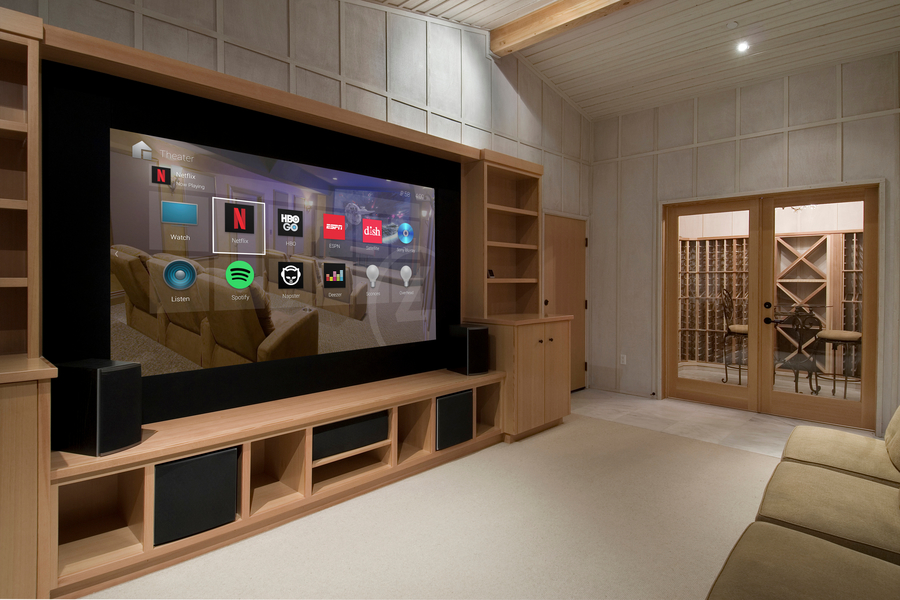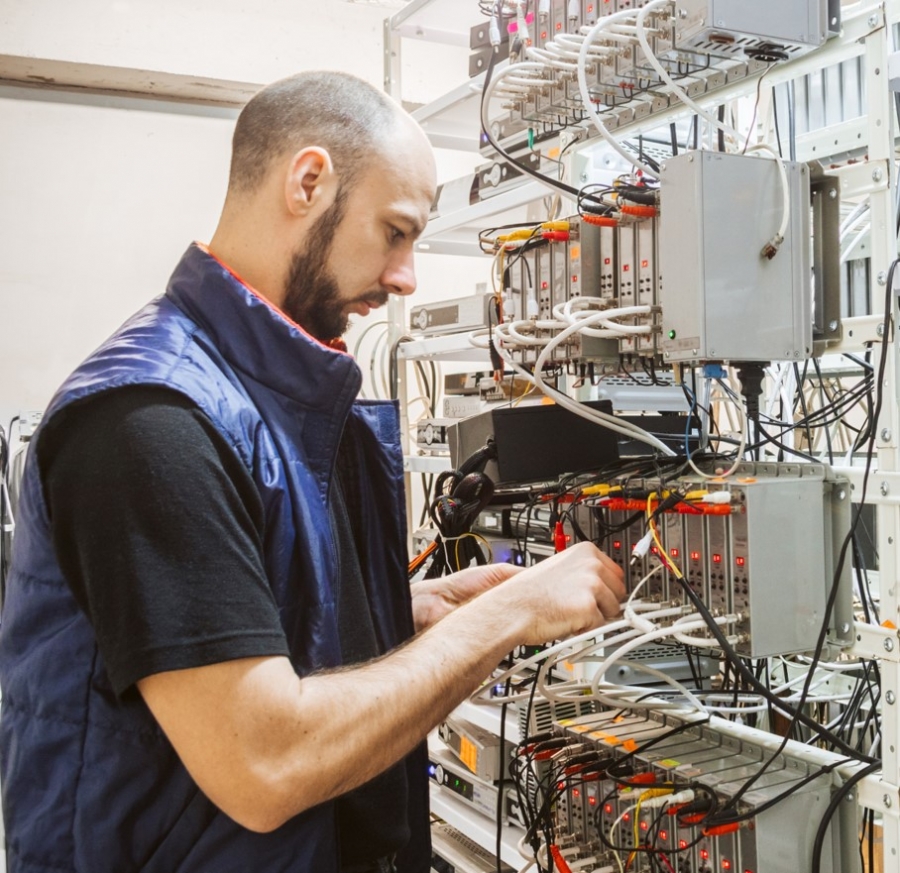Comprehending the Prices Associated With AV Installation Projects
Comprehending the Prices Associated With AV Installation Projects
Blog Article
Designing Dynamic Learning Settings With Advanced Sound Visual Systems
In the swiftly evolving landscape of education, the assimilation of sophisticated audio-visual systems stands as an essential development, changing conventional class right into vibrant understanding environments. These innovative innovations not only assist in interaction however additionally satisfy various learning styles through immersive experiences. With tools such as interactive displays and high-def projectors, instructors are furnished to boost interaction and cooperation. As we explore the potential of these systems, one need to consider how they improve instructional methods and influence knowing outcomes. What does this mean for the future of education and learning, and how can organizations best leverage these improvements?
Comprehending Advanced AV Systems
In today's rapidly developing academic landscape, progressed audiovisual (AV) systems have actually become important to developing appealing and effective knowing settings. These systems incorporate a wide range of innovations, consisting of interactive screens, high-definition projectors, and advanced audio systems, all of which add to a more immersive educational experience. By leveraging these innovations, educators can offer information in varied and dynamic layouts, providing to various finding out demands and designs.
Comprehending the parts and abilities of sophisticated AV systems is vital for teachers and managers aiming to enhance their training environments. Interactive display screens, as an example, allow real-time cooperation and feedback, permitting students to involve even more deeply with the web content. High-def projectors guarantee that aesthetic materials exist with quality, enhancing understanding and retention. Progressed audio systems deliver clear sound, which is necessary for preserving focus and making certain that all trainees can hear and comprehend the product being provided.
Incorporating advanced AV systems needs not just an understanding of the technology itself however additionally strategic planning to line up these tools with instructional objectives. By attentively incorporating these systems, schools can foster a setting that supports ingenious mentor methods and enhances the general instructional experience for both students and instructors.
Enhancing Student Interaction
Every person acknowledges that student involvement is a vital part of successful discovering end results. Involved students are extra most likely to take in info, take part actively, and establish essential assuming skills. Advanced audio-visual (AV) systems play a substantial duty in fostering this engagement by developing immersive and interactive learning environments. These systems can transform conventional classrooms right into dynamic settings where students are motivated to discover.
High-quality noise and aesthetic elements help record students' interest and improve their understanding of complicated subjects. Making use of large display screens with crisp imagery and clear audio can make lessons much more comprehensible and captivating. Furthermore, AV systems assist in varied training techniques, such as collective jobs and multimedia presentations, which can deal with different learning styles and maintain trainees interested.
In addition, the consolidation of AV systems permits for real-time feedback and interaction between students and teachers. This immediacy can encourage energetic engagement, as pupils really feel a lot more linked to the lesson and positive in revealing their thoughts. Thus, by incorporating innovative AV technologies, universities can develop a useful content stimulating atmosphere that not just improves involvement however also sustains far better scholastic efficiency and student contentment.
Integrating Interactive Technologies
Although the integration of interactive technologies in educational settings notes a considerable change from traditional teaching techniques, its effect on trainee knowing and involvement is profound. Interactive innovations, such as wise boards, digital tablet computers, and virtual fact applications, have redefined the class, transforming it right into a dynamic area where pupils proactively take part in their discovering journey. These modern technologies cultivate partnership, creativity, and crucial thinking, as students are urged to communicate with electronic content, execute simulations, and participate in analytic activities.
Using interactive technologies helps with real-time feedback and evaluation, permitting educators to tailor instruction to meet private demands. This immediacy in responses boosts the finding out procedure, making it possible for students to recognize principles better and rapidly address misconceptions. In addition, such innovations advertise inclusivity by supplying diverse students with several ways of accessing and engaging with web content.
Furthermore, these devices connect the void between academic expertise and useful application, preparing students for a technology-driven world. By creating immersive and interactive discovering experiences, instructors are much better outfitted to capture trainees' focus and sustain their passion. As the educational landscape continues to develop, the tactical assimilation of interactive technologies continues to be pivotal in fostering a efficient and engaging understanding atmosphere.
Adapting to Diverse Learning Styles
Tailoring academic strategies to accommodate varied understanding styles is essential in promoting a inclusive and reliable class atmosphere. Advanced audio aesthetic systems supply versatile devices that can resolve the varied choices of students.
Kinesthetic learners grow in settings that enable hands-on communication. Technologies such as online truth (VIRTUAL REALITY) and enhanced fact (AR) offer immersive experiences that engage these students by enabling them to control electronic things or explore digital environments. Flexible learning software application can tailor content distribution to private learning preferences, facilitating individualized education and learning paths.
Executing Collective Devices
In today's interconnected academic landscape, the integration of collective devices plays a crucial duty in boosting student involvement and facilitating teamwork (AV Installation). These devices are crucial in developing dynamic learning settings that foster interaction, essential reasoning, and analytic skills among trainees. By leveraging sophisticated audio-visual systems, instructors can apply platforms that support real-time interaction, my response file sharing, and joint project advancement, therefore urging an extra active participation from students

Incorporating collaborative tools within the class not just aligns with contemporary educational standards however additionally prepares trainees for the modern-day workforce where synergy and technical effectiveness are highly valued (AV Installation). As institutions aim to develop environments that are both cutting-edge and inclusive, the critical implementation of these tools becomes increasingly vital, making certain students are furnished with the skills needed for future success

Conclusion
High-definition projectors, interactive screens, and innovative noise systems produce immersive settings that accommodate diverse understanding designs and facilitate clear interaction. Collaborative devices make it possible for seamless pupil partnership, preparing learners for future challenges in a technology-driven globe, therefore enhancing both comprehension and retention of understanding.
Everybody acknowledges that trainee interaction is a vital part of effective understanding outcomes.Although the integration of interactive technologies in academic settings marks top article a considerable shift from conventional teaching methods, its impact on pupil knowing and involvement is extensive. Interactive modern technologies, such as smart boards, electronic tablet computers, and digital truth applications, have actually redefined the classroom, changing it into a vibrant area where pupils proactively take part in their understanding trip. By developing immersive and interactive knowing experiences, teachers are better geared up to record students' attention and suffer their rate of interest. These tools are important in producing dynamic knowing environments that promote interaction, crucial reasoning, and problem-solving abilities among students.
Report this page